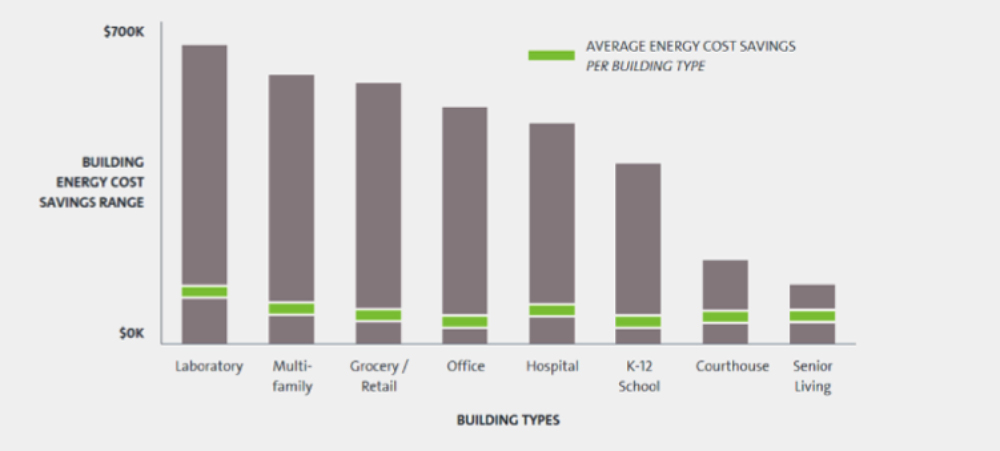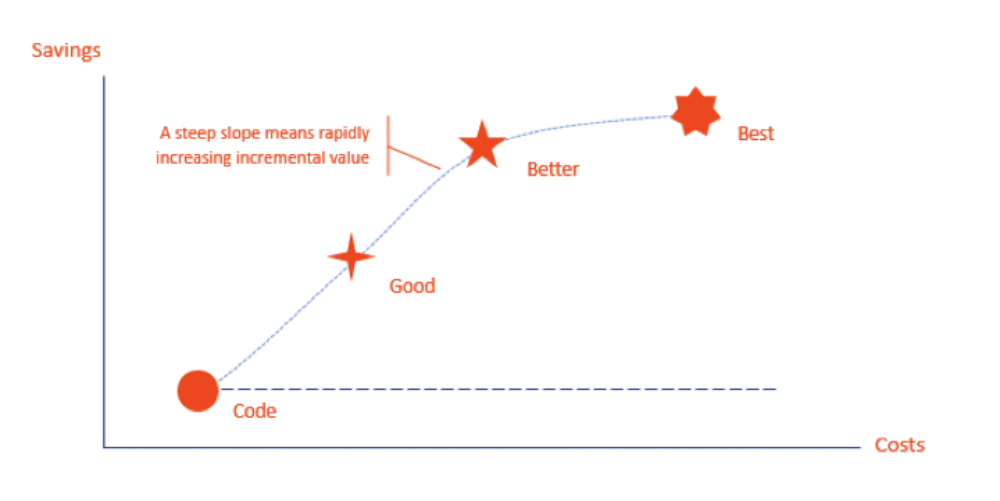
The Weidt Group: The value of energy analysis from design day one
Boston, MA The design process for commercial facilities begins with the intent of creating an energy-efficient structure, reducing operating costs for building owners by ensuring energy is optimized. For new buildings, achieving energy efficiency can translate into a significant amount of money saved that can add up to millions of dollars in lifetime savings. This savings potential can be significantly increased—if energy analysis is used to optimize design decisions early enough in the process to make a meaningful impact.
After field-testing the performance of nearly 2,000 buildings, verified results show the range of potential energy savings for buildings can be significant, but the ability to achieve higher than average savings is highly dependent on early energy analysis. Since total savings are directly correlated to the timing of energy analysis, it is important to find the right balance between energy savings, investment costs and utility incentives at the start of a project. The analysis examines how complex design decisions such as building massing and orientation, natural daylighting, insulation values, HVAC system types and other design options perform together (see chart 1).
As an energy consultant, The Weidt Group collaborates with design teams and building owners to help them during design and operation to reduce building energy consumption. The firm helps teams understand savings potential beyond the energy code for new construction projects. The breadth of project experience ranges from large and complex laboratory buildings to senior centers. The Weidt Group uses real-time energy analysis to help owners and design teams understand how seemingly small decisions can have an exponential impact on energy savings.
Net energy optimization allows for the easy comparison of multiple bundles of design options to help design teams understand the impact of decisions on efficiency and costs. The true value of this approach is—when used early during design—teams are able to find the optimal combination of strategies in real-time, during design meetings. Seeing instant results from design decisions during these meetings is important since schedules and budgets are tight and the design process can move very quickly (see chart 2).
In addition to supporting real-time decision-making, this process identifies and calculates the amount of utility incentives that help teams offset the implementation costs of energy conservation strategies. Receiving this information at the start of the project supports overall budget planning, since incentives can be substantial, giving owners the opportunity to incorporate strategies they may not have been able to afford on their own.
The impact of early energy analysis is significant. Performing this analysis in the pre-design phase can result in higher energy cost savings beyond the energy code, averaging 15% greater savings versus analysis beginning in later design phases. Simply put, the earlier you start energy analysis, the easier it will be to achieve savings closer to the top of a building’s potential savings range.

